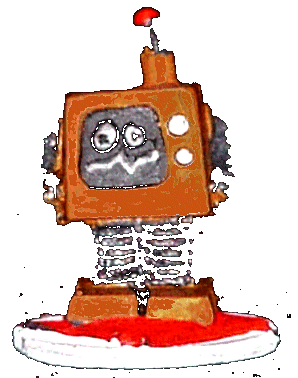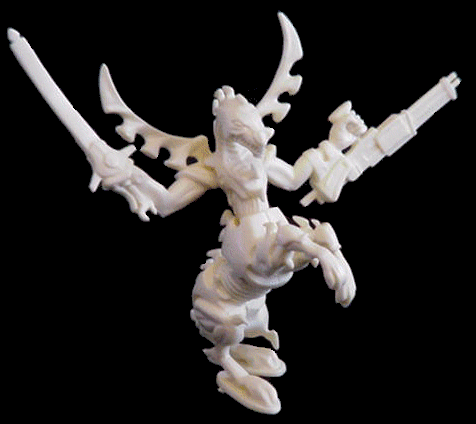
|
|
| 1-6 Players | 60+ minutes |
|
Concept: Various creatures of the night, aliens, and monstrosities are conspiring to take over the world. Players assume the role of a hunter who works to thwart the conspiracies while earning fame and fortune doing so. |
|
|
Gameplay: Players each start the game by choosing a playing piece and taking a skills sheet. Plot cards are shuffled and placed on the board in the slot that is marked for the number of players. There are two parts to each turn: a player turn, then a plot card turn. During the player turn, the player moves around the board with his/her character building up skills or travelling on the map to stop a plot. On the plot card turn, the plot card advances one space towards being revealed. There are two sections on the board: the map and the career track. Players start on the career track, and move around it to gain skill points and equipment. The six sided die is used to move around the career track. Skill points are very important because when you combat a plot, you must test their skills where failure means a trip to the hospital for several turns. When a skill is tested, the player must check they type of test: Easy, Average or Difficult and then roll the 10 sided die. To succeed, a player must roll a number less than or equal to double their skill points for an Easy test; less than or equal to their skill points for an Average test; and less than or equal to half of their skill points for a Difficult test. Equipment may be used to add to a player's skill points, too. But... a roll of 1 will always succeed and a roll of 10 will always fail. On the career track, succeeding in a test usually boosts you skills more or gives you equipment -- failure usually reduces skill points. Equipment will either boost a skill or be sold for money. When a plot has advanced far enough, players may enter the map by moving their marker to one of the corners of the career track. When the player goes to the city location listed on the plot card, they reveal that plot. Most of the time the player must decide if they will fight the plot or try to escape. If they fail to escape, they must fight. If the fight an fail...they go to the hospital and the plot continues to advance. A typical player's turn goes like this:
If a player successfully stops a plot, they keep the plot card. A player earns fame points for each plot card they capture. Major plots have multiple point values found in the upper corner of a plot card. Minor plots don't list a value, but are worth 1 point. If players allow a plot to complete, nothing happens unless the plot was a major plot. A major plot will advance one of the evil groups' pieces on the plot point scale. If one of these groups should reach 20 points, then they win and the players lose. Major plots range from 2 to 6 points. Players must try to stop the major plots...but they don't know which plot is a major one until they confront it, or it succeeds. The game ends when the last plot card is stopped or it completes. |
|
|
Winning Conditions:
or |
|
|
Our Opinion:
The game appears rules heavy: the rule book is 8 pages long. The basics are pretty easy, though -- go around the outer part of the board until you are strong enough to fight the conspiracies, then change to the map to save the day. The rules do have their problems. There are numerous charts that players must constantly refer to for the results of special events: players often forget to check for the special results because they want to fight the conspiracies first. The game also shipped with an errata page correcting a typo on the board itself -- missing that can really influence the game. Once you get past the awkward feel of the rules, players get into a smooth mode and it does play well. We found this game in 1996 in comic book store's clearance section. Apparently that was just after GDW went out of business. We have enjoyed this game each time we played it. The game can push the players to nearly fail to stop the evil forces pretty consistently -- so there isn't a lack of challenge. But, when the dice don't roll your way, it can be a dull game. My character ended up in the hospital for 6 turns in a row once -- 6 turns of "move 1 space & roll for an event --" frustratingly dull. Once you get used to the charts, the game is fun. It's too bad that it is out of print, because people who have played this game usually want to find more copies of it for themselves. So, if you find it and the price is right, get it... it's a good fun game. |
|
|
Where to buy: This has been out of print for a long time. If you can find it... it may cost more than it's worth. |
|
 Other Reviews Other Reviews
|
Zombie Main page
|